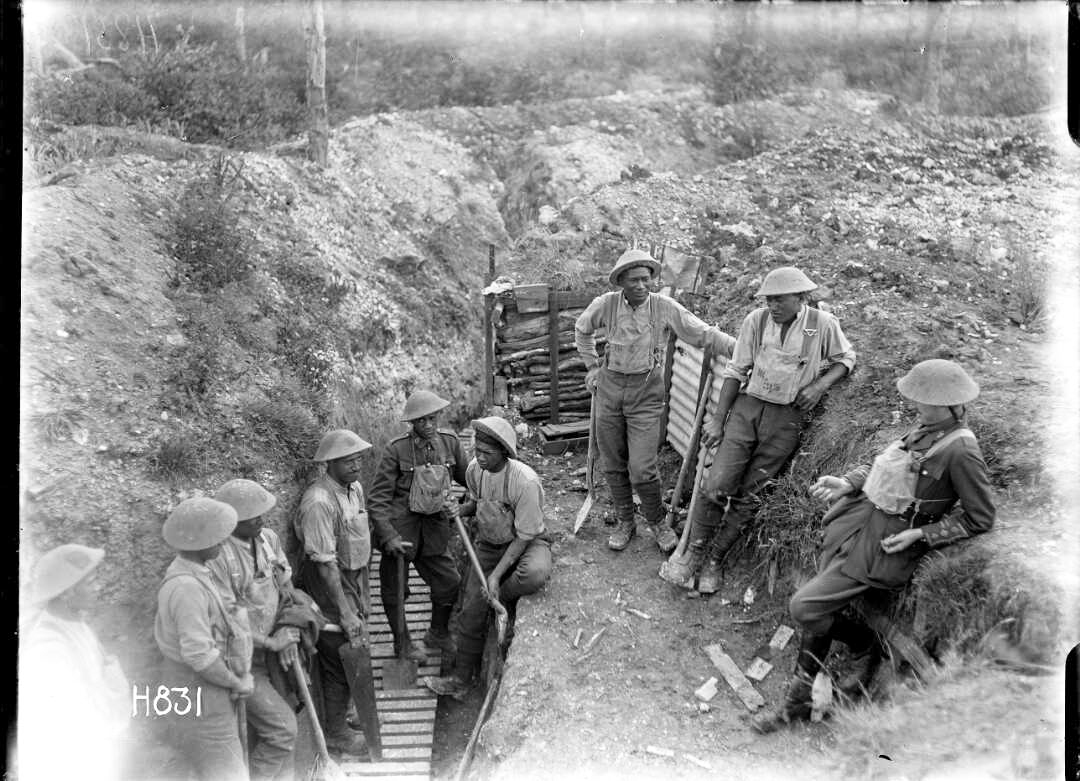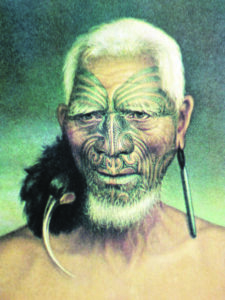As part of a Valley Profile series, MEGHAN HAWKES explores our local history by seeking out stories of life and death in the Thames Valley
They were the pick of the tribe, those young men who were selected to serve in the Māori Battalion in World War I.
Although many were not trained, it was noted that they quickly picked up soldiering skills; their rural lives ensured there was “none of your town softness about them.”
Three of the Angel brothers, Edward, William and Richard were by 1915 at the Māori Training Camp at Auckland’s’ Avondale racecourse, ready to ship out as part of the 1st Māori Contingent on the Warrimoo bound for Suez, Egypt. Richard, pictured right, was a 26-year-old farmer living at Thames before he and his brothers became part of the 500 strong Māori Battalion.
On the Warrimoo, they gained their sea legs, practised rifle and physical drills, guard duty and kit inspections. Messages were put in bottles and optimistically thrown overboard. Once at Port Suez, they took the train to Cairo, many sitting on the carriage roofs enjoying the novelty. The journey to Zeitoun, a huge military camp, took 10 hours.
Despite requests by the Minister of Defence and Māori MPs, the battalion was not sent to Gallipoli with the first invasion force in April, 1915. It was kept in reserve and placed on garrison duty on the island of Malta. To the battalion’s delight there was plenty of kina and puha at Malta.
At the beginning of May, due to increasing casualties among the Anzacs at Gallipoli, the Māori contingent was put on active service. In preparation for Gallipoli, the men wrote wills and sent letters home. The contingent was noted to be “in great trim, hard as nails and itching to be taken”.
When the order to move was announced in the officer’s mess, a great commotion began – plates, spoons bully beef, bread and potatoes flew through the air amid cheering. This may have been regretted as the provisions on the ship to Gallipoli consisted of rotten meat and potatoes and not enough bread. As they neared Anzac Cove, the men heard the rumble of artillery fire and saw sporadic flashes on the horizon.
The battalion camped at No 1 Outpost. Their accommodation was ledges cut into slopes and the small settlement was named Māori Pa or Māori Ridge.
The men worked at sapping – digging short trenches (saps) across No Man’s Land towards enemy trenches in preparation for a big offensive in August. They also dug communication trenches and widened the only sheltered route by which provisions and ammunition could be brought from Anzac Cove.
There was continual noise – shells exploding, machine guns rattling, and planes overhead all shrouded in a haze of smoke. At the outpost, men used tunnels to move to and from the trenches but they still had to be cautious of Turkish snipers. Sapping in trenches about 50 yards from the firing line was a dreadful combination of flies, contaminated food and corpses.
The Māori contingent coped well, although some of them suffered from the constant work and trying to avoid rifle and shell fire. The diet was poor, water was tainted from being boiled in kerosene tins, and there were infestations of lice.
On August 4, the enemy was reported erecting wire entanglements in Chailak Dere – a narrow valley falling down from Chunuk Bair. The men were informed of their role in what would later be called the “August stunt”. The Māori contingent was to be part of the first phase of the breakout in the Anzac sector. Two covering forces would capture the foothills above the entrances to three Deres (valleys). They had just 2.5 hours to seize the foothills.
Before going into battle, their chaplain, Wainohu, spoke to them – “Fellow members of a brave family . . . you are the descendants of . . . warlike ancestors . . . I know that some . . . now here will never again stand together with us. But it would be better for us all to lie dead in these hollows and on the tops of mountains than for a whisper of dishonour to go back to the old people at home”.
The success of the attack on Chailak Dere depended on the removal of barbed wire entanglements that blocked the entrance to the valley. Richard Angel was part of this offensive. The mass of barbed wire was high, deep and solid and an enemy track ran right across the opening. The men came under heavy but erratic fire as they pulled up stakes. One man broke his arm and another was set alight by a flare.
They then went over the trench shooting and bayoneting Turks. When the first ridges and trenches had been taken, the Ngapuhi platoon broke into a haka.
After a week’s rest, many of the contingent were back in action again. By September, they were down to fewer than 250 men. By October, one of the Māori Battalion observed: “Ours was a lonely looking party, about 100 out of a force of 500”. In December, 1915, all New Zealand troops were evacuated from Gallipoli. Richard Angel embarked for France and in June, 1916, he was admitted to the French No 7 General Hospital.
In October, he was promoted to lieutenant and presented with a Military medal awarded for “bravery in attack on Turkish trenches on Bauchops Hill and removing wire entanglements in Chailak Dere, Gallipoli, on August 6”.
Richard had “led his section with the utmost dash”.
In April, 1917, he was invalided back to New Zealand but in January, 1918, Richard went back to the front as a Second Lieutenant with the 24th Māori reinforcements.
He was part of a group who helped the NZ Tunnelling Company in Arras, France, refurbish a cavern system for possible use when the Germans launched an anticipated offensive. While there, Richard carved his name into one of the tunnel walls.
World War I ended in November, 1918, and in April, 1919, the Māori Contingent returned home, welcomed with parades and parties across the country.
Richard returned to civilian life and in 1920 married Margaret Elsa Price of Dargaville. They settled in Thames and had three children, a son and two daughters.
Known locally as Athelstan or Dick, he was a keen wood chopper, regularly participating successfully in competitions at agricultural shows, sports days and axeman carnivals. An athletic man with a remarkably fine physique, he became well known across the North Island.
In June, 1930, grim tragedy overshadowed Thames when, within twenty-four hours, four residents met with sudden deaths. Among them was 43-year-old Richard Angel, who had been working in the bush at Mokai, near Rotorua, when a wire rope snapped fatally striking him.
Richard was brought back to Thames and buried at Shortland cemetery. He left a widow and three children under ten. His son would go on to serve with the 28th Māori Battalion in Italy during World War II. He died in 1966, at the same age as his father.




